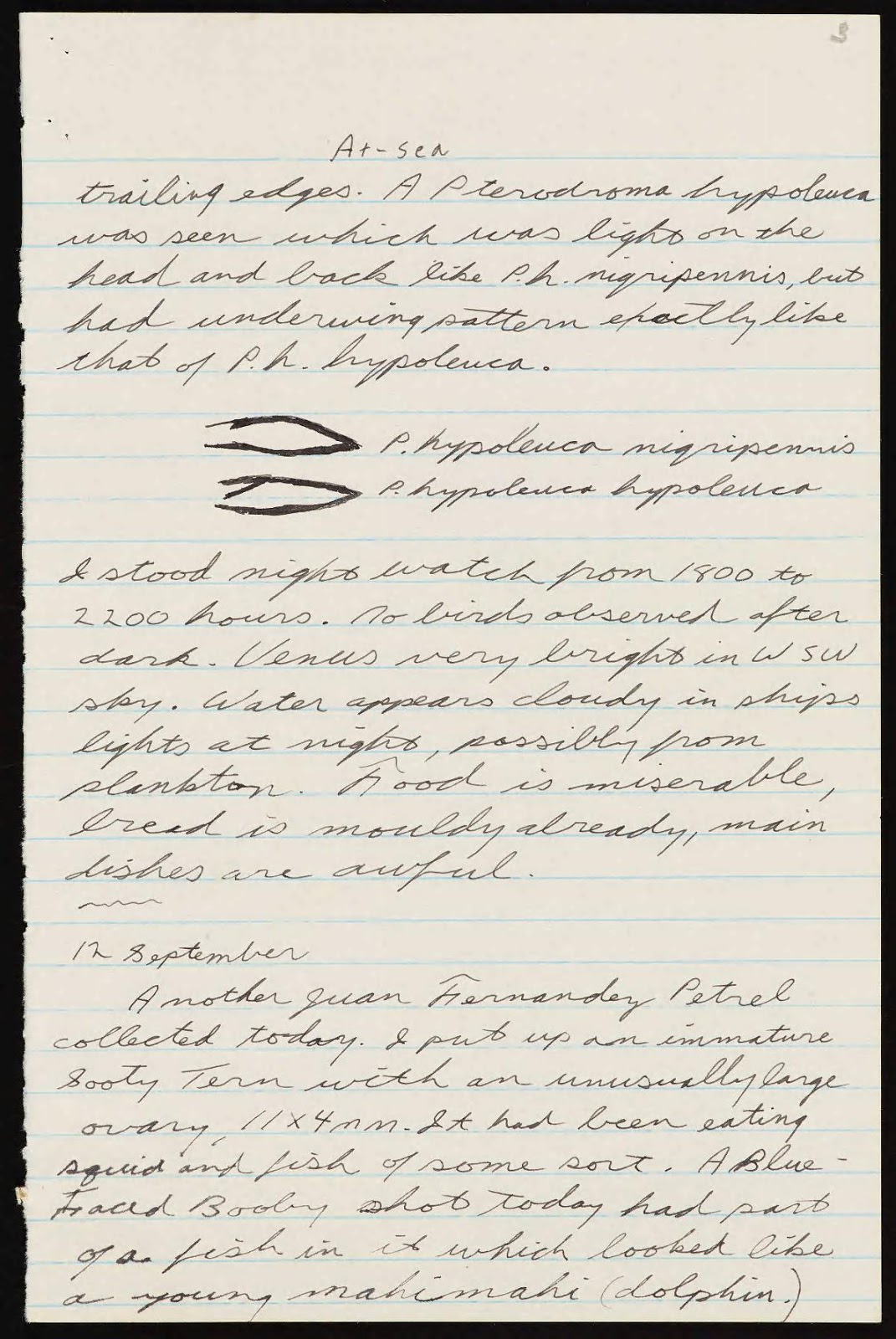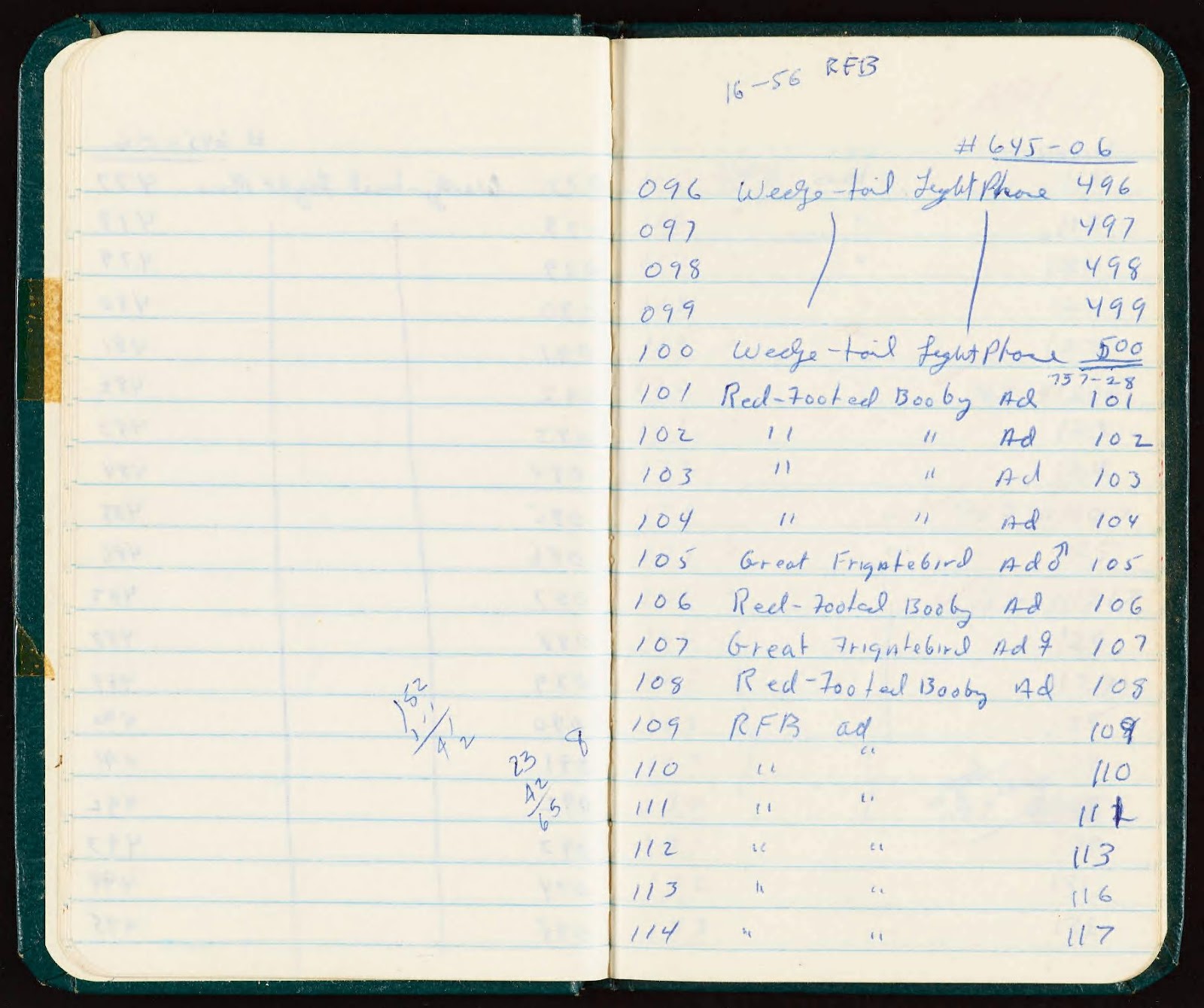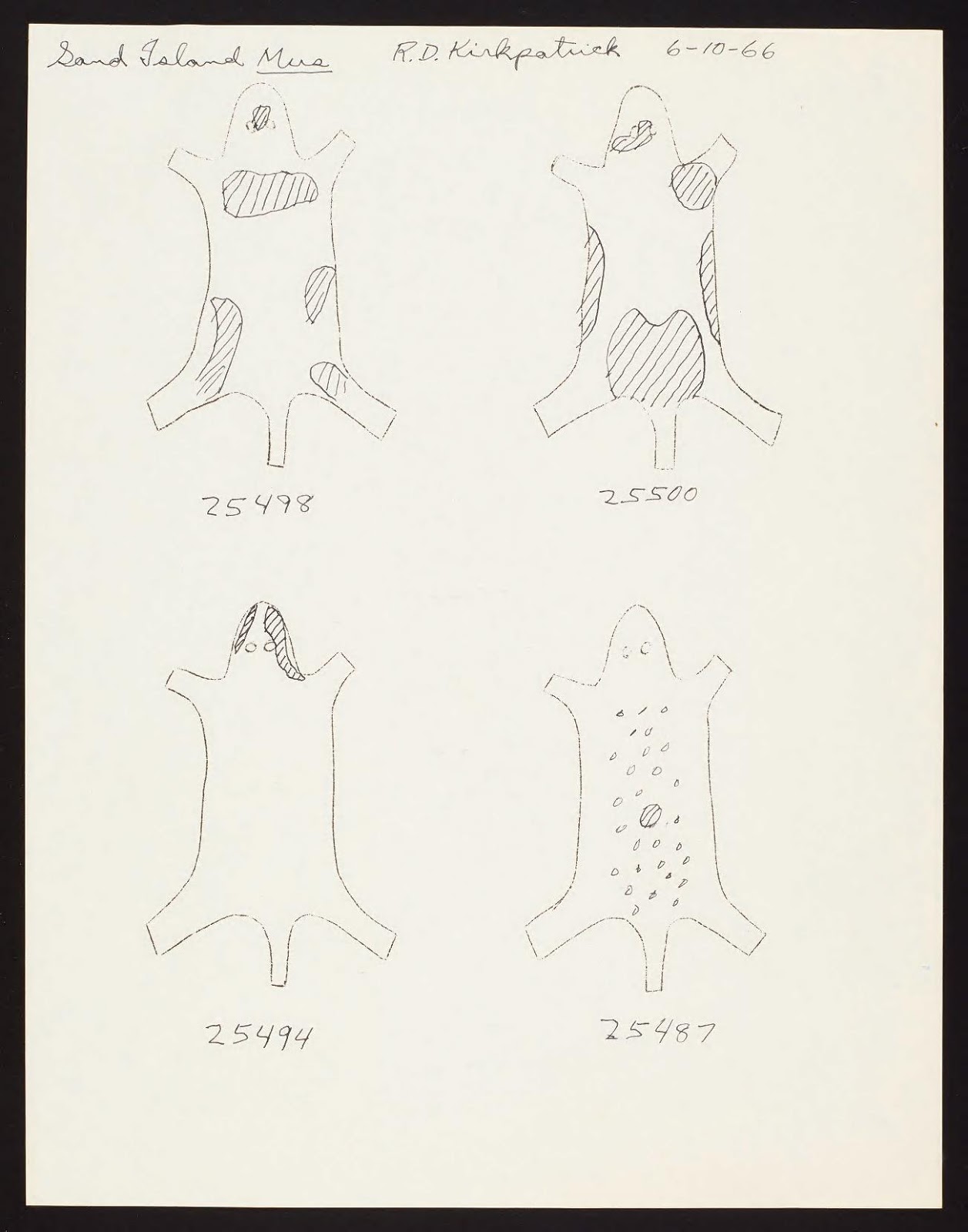POBSP, how they did it : when science meets military interest
In the middle of the Cold War, the Smithsonian Institution embarked on the Pacific Ocean Biological Survey Program (POBSP) to survey U.S. territory islands and atolls dotting the central Pacific Ocean. From 1963 to 1969, researchers sought to inventory the plants and animals present on the islands, observe seasonal variations in numbers and reproduction, and the distribution of pelagic birds. Over the course of the survey, researchers observed approximately 150,000 pelagic birds at sea, banded 1,800,000 birds, and surveyed the flora and fauna of the islands, the most comprehensive study at the time. An incredible amount of data was collected during the POBSP, drastically increasing information available about the ecology of the small islands. Although it resulted in an incredible amount of data, the survey only spanned three years in part due to questions about the funder’s intentions.
 |
| Puffinus newelli (Newell’s shearwater), 1965. https://www.biodiversitylibrary.org/item/243657 |
The Smithsonian received grant funds from the Department of Defense for the POBSP. In exchange, the DOD requested basic information about the movements of birds and several thousand blood samples. While the request was unorthodox, it was seen as justified since migratory birds were damaging aircrafts and communications equipment in the Pacific. Smithsonian agreed to the request and embarked on the first stretch of the POBSP in 1963.
Once the survey began, it became clear Smithsonian wasn’t completely aware of what it had signed up for. The military would complete exercises without explanation and kept the Smithsonian staff on a “need to know” basis. There is evidence that some of the researchers tried to get more information on why the military was so interested in the data but didn’t succeed. In the end, the staff accepted requests for secrecy, seeing it as a fair trade for the work they had the opportunity to complete, a task inaccessible to other groups.
 |
| Venus was bright on this particular September night in 1965. Tordoff, Jeffrey P. 1965. https://biodiversitylibrary.org/page/55214829 |
We now know that the military conducted germ warfare tests in the Pacific in the 1960s, including The Pacific Project which exposed military personnel and biologists to chemical cleansers and bacteria which have been linked to debilitating conditions. There’s no official connection between the POBSP samples and these tests, and researchers from the Survey have not reported similar health effects as military personnel who were part of the Pacific Project. But the Department of Defense’s interest in the blood samples and migration patterns sparked suspicion which ultimately ended funding for the Survey in 1969.
Considering the political climate at the time, the Smithsonian was perhaps naïve in not considering the implications of the exchange in funds and information with the Department of Defense. The Institution’s researchers were offered the opportunity to complete research in remote areas that were expensive to study and required military cooperation to even get to. The younger biologists were particularly thrilled at the chance to be out in the field for weeks at a time like the biologists before them. What they all saw was a godsend.
 |
| List of blood samples collected in 1966. Laysan Island, October 1966, Blood. https://www.biodiversitylibrary.org/page/54928748 |
The history of the POBSP and its connection to American military interests of the 1960s is incomplete, and parts of it will likely remain unknown. Despite this dark side to the survey, it is undeniable that Smithsonian’s researchers were able to collect an impressive amount of information during their expeditions to the Pacific. As part of the BHL Field Notes Project, the Smithsonian Institution Archives has taken on the task of digitizing field notes from the POBSP. Considering the shear amount of data collected, it should be no surprise that there are over 1000 field notebooks in the collection, making this SIA’s largest undertaking for the Field Notes Project.
 |
| Mus autopsy data, 1966. https://www.biodiversitylibrary.org/page/55373636 |
To date, nearly 300 field notes from the collection are readily available in BHL, and many more are in the final post-processing stages in preparation for BHL. Stay tuned for the complete set of notes in the upcoming months.
The BHL Field Notes Project is funded by the Council on Library and Information Resources (CLIR).
References
Finding Aid for “Record Unit 245, National Museum of Natural History, Pacific Ocean Biological Survey Program, Records, circa 1961-1973, with data from 1923”.
MacLeod, R. (2001). “Strictly for the Birds”: Science, the Military and the Smithsonian’s Pacific Ocean Biological Survey Program, 1963-1970. Journal of the History of Biology, 34(2), 315-352.
Rauzon, M J. (2006). “Live Ammo: Testing of Biochemical Agents on U.S. Sailors.” The Asia -Pacific Journal : Japan Focus, 4 (12).
Further Reading
Hunter, E. (2011). “Life in the Field: a Reflection on Cataloging Field Notes in the Pacific Ocean Biological Survey Program.” Smithsonian Field Book Project Blog.
Lamb, J. (2016). “TheStrange Tale of the Pacific Ocean Biological Survey Program.” JSTOR Daily.
Parilla, L. (2013). “I Found It in a Field Book: Hawaiian Monk Seal Family Images.” Smithsonian Field Book Project Blog.Tennis, A. (2016). “Invasive Pests of the Pacific.” Smithsonian Field Book Project Blog.





Leave a Comment